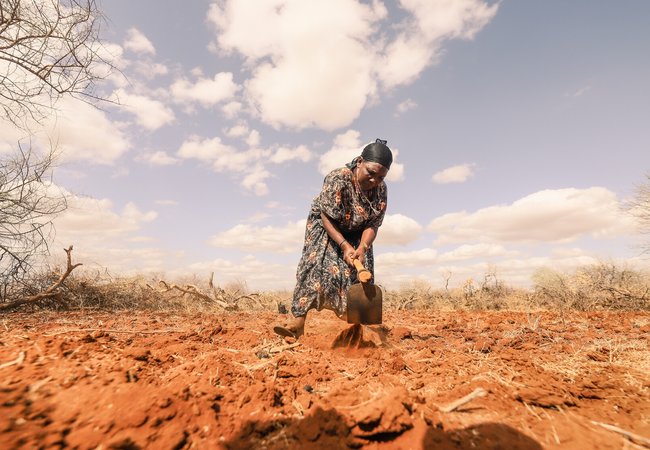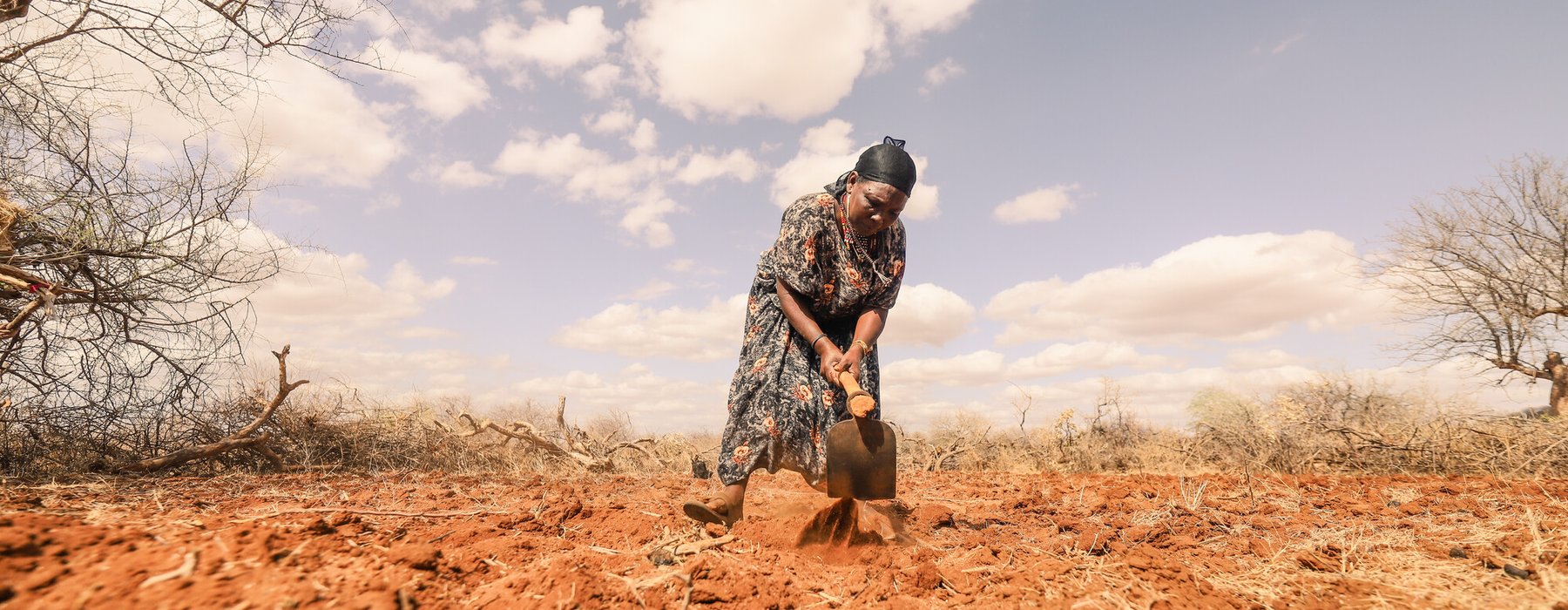Scientists agree that human actions are driving climate change and contributing to a greater risk of drought.
Climate change
Our reliance on fossil fuels to power our homes, industry and cars is driving up global temperatures, causing the climate to change. Burning coal, gas and oil produces carbon dioxide and other greenhouse gases. These gases build up in the atmosphere, trapping heat like the glass roof of a greenhouse. This then creates hotter temperatures, which in turn cause water to evaporate quicker. As water evaporates, the surface temperature of the land increases and the earth parches.
UN studies predict that climate change is likely to increase the risk of drought in 129 countries in the next few decades. Low and middle-income countries are most at risk because they don’t have enough resources to withstand the devastating impact of droughts. Despite being the least responsible for climate change, people in these countries are suffering its worst effects in the form of more intense and frequent droughts, floods and fires.
Deforestation
The world’s rainforests and woodlands play a vital role in maintaining the earth’s climate.
As the lungs of the earth, trees absorb vast amounts of carbon dioxide, reducing emissions overall and keeping global temperatures down.
Trees also promote rainfall by absorbing water from the soil and releasing moisture into the atmosphere, which then goes on to produce clouds and rain.
Forests are a key defence against drought, but logging and clearing of vast swathes of rainforest for human use and profit continue unchecked.
The Amazon rainforest loses about 10,000 acres every day to this kind of destruction, leading to severe droughts in surrounding areas, and having disastrous consequences for the earth’s climate.
High demand for water
The industries that serve our seemingly endless need for the latest clothing or gadgets are also placing huge pressure on the planet’s water reserves.
The fashion industry is the second biggest consumer of water after agriculture. Every year, it uses around 93 billion cubic metres of water, which is enough to meet the needs of 5 million people.
Fast fashion, luxury goods and the production of other textiles are depleting groundwater in Brazil, Central Asia, India and parts of the USA.
Cotton production uses a lot of water. Making just one pair of jeans takes 7,500 litres of water – around as much you would drink in seven years.
The UN has found that fast fashion accounts for 8% of the world’s greenhouse gas emissions, more than all airplane and shipping emissions combined. And these gases make the planet much hotter. With its huge carbon emissions and near bottomless thirst, the fashion industry is drying out our planet – all because of our constant demand for cheap, trendy clothes.
Agriculture
Farming uses more than 70% of the world’s freshwater, making it the biggest consumer of this precious resource. Not only is it sapping the reserves that are there, but it’s also the biggest cause of pollution of what water is left. Agriculture occupies about half of all land that can be lived on, and is also a leading cause of de-forestation. However you look at it, our hunger for cheap, plentiful food is having a grave impact on the climate and the planet. Food production accounts for more than a quarter of the world’s greenhouse gas emissions – driving global warming and, ultimately, more drought.

